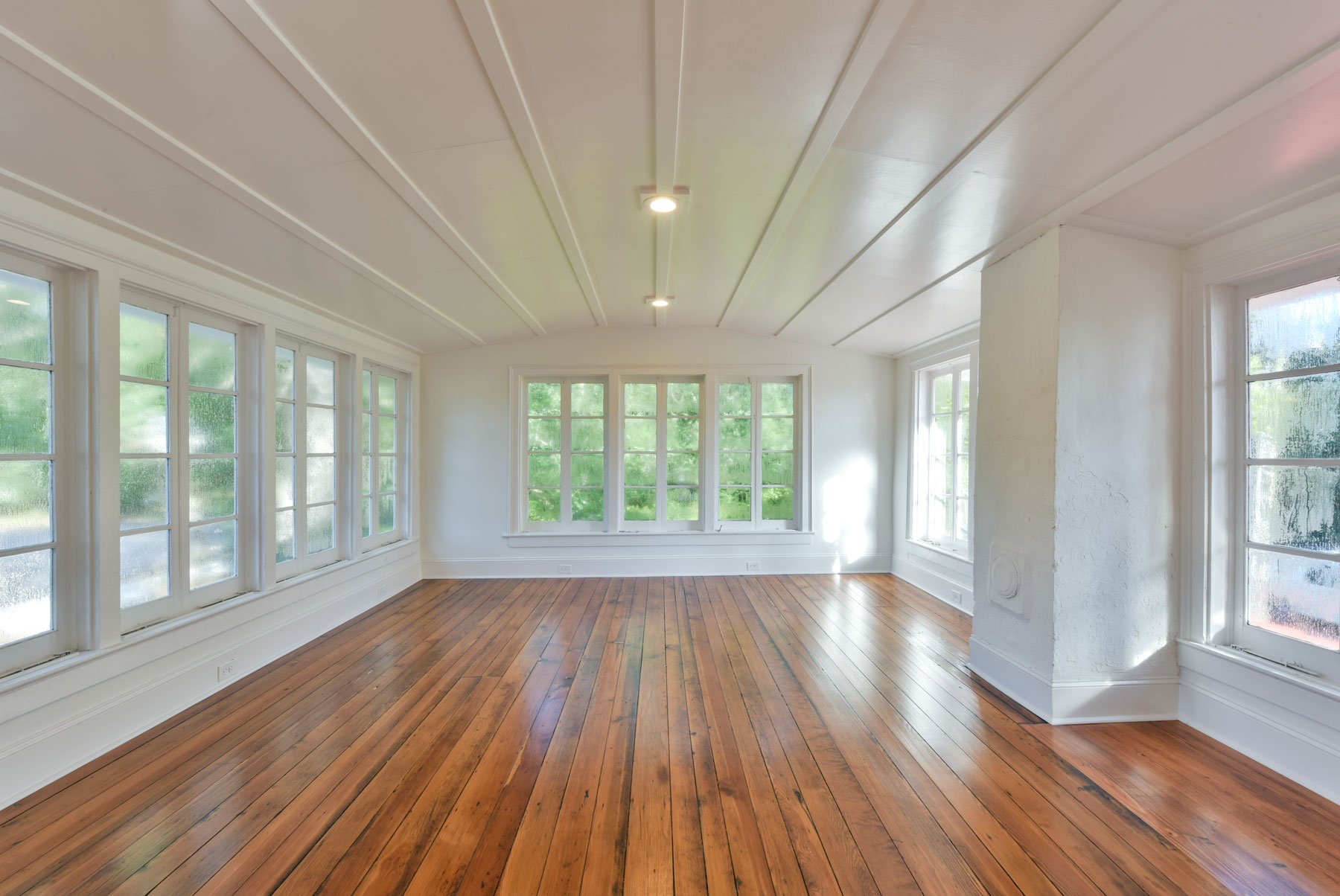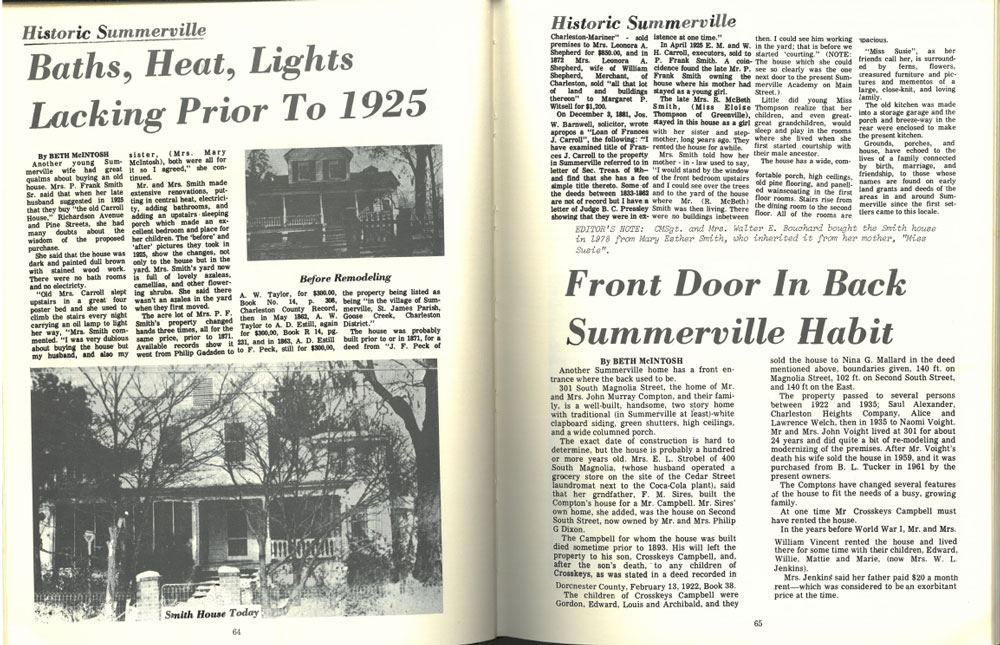Being an architect that restores historic properties in the greater Charleston area of South Carolina means that you must also be a good researcher and detective. The Swallowtail philosophy begins with the thoughtful consideration of the home’s history. What was the original purpose of the home and land? Who lived here? How has the property changed over the years? By understanding the history, we can go about creating the appropriate plan to preserve and restore the home.
“Old Mrs. Carroll slept upstairs in a great four poster bed and she used to climb the stairs every night carrying an oil lamp to light her way,” Mrs. Smith commented.
Beth’s Pineland Village

1920’s Era Sleeping Porch Addition Restored
While working on our project, the Historic Summerville Home Conversion, on the corner of West Richardson and Pine, we learned that the home had been purchased in 1925 by the Smith family. They were the ones who undertook much of the renovations that brought the home into the 20th century–baths, heat, and light. The “Old Carroll” house as the Smith’s knew it had been built during the second half of the 19th century with deed entries for change in ownership dating in the 1860s.
The before and after pictures they took in 1925, show the changes not only to the house but in the yard. Mrs. Smith’s yard now is full of azaleas and camellias, and other flowering shrubs. She said there wasn’t an azalea in the yard when they first moved in.
Beth’s Pineland Village
We wanted to share an article we found about the home in “Beth’s Pineland Village.” From our research we learned about Mrs. Smith initial reluctance to purchase such an old home and then the additions and renovations they undertook such as the sleeping porch, as well as a sweet family connection to the property linking generations.


